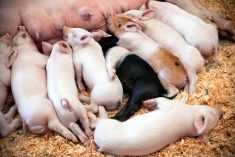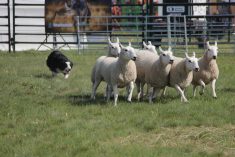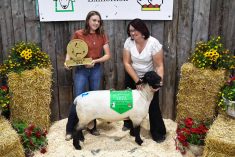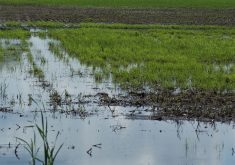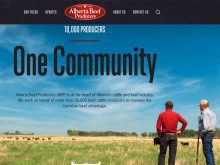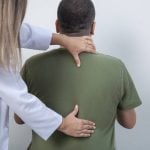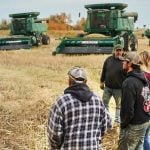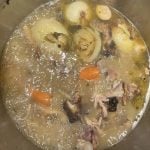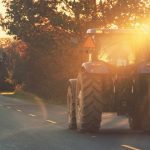BLACKFOOT, Alta. –Elaine Hardstaff’s best days are spent looking at the side of a horse.The horse therapist has been soothing, healing and massaging the muscles and bones of horses for 12 years.“How can you call it a job when you love it so much,” she said from Blackfoot, where horse plates and ornaments decorate the farm home she shares with her husband, Wayne.She said horse ailments relate directly to what the animals do as performance, rodeo or working horses, so that’s where she begins any diagnosis.Hardstaff looks at whether they are holding their head too high, which could indicate a shoulder injury, or whether their stride is not continuous in barrel racing, which means a rough ride that could lead to injury.Horses in team roping and gymkhana events commonly have neck issues, she added.“Each horse and what its job is presents unique problems,” said Hardstaff, a longtime chuck wagon racer who keeps 14 horses on 20 acres.“When they’re working, they will give you the best run you’ve ever had.”Eunice Woodward of Macklin, Sask., whose daughters compete in English and western riding events, turns to Hardstaff when her animals come up lame.Therapy keeps them sound and keeps them going, she said.“It’s worth the money,” she said of Hardstaff’s $60 hourly fee. “To have a horse is an expensive thing and if it’s down and you can’t use it, that makes it more expensive.”More people are using therapists today, said Woodward, who conducts riding clinics.She recalled a horse with a bad shoulder that was striding again after being treated by Hardstaff.Hardstaff has also worked on Woodward’s daughter’s Pomeranian dog, which limps from injuries suffered in a dog attack.Dogs and the occasional cow and alpaca are sidelines for Hardstaff, who also works as an aide at an alcohol and drug abuse centre in the winter. Summers are focused mainly on horse care.As two different phone lines rang simultaneously, she explained how horse therapy and chuck wagon racing keep her on the road from spring to fall.“I go on gypsy leave,” sad Hardstaff, whose business name, Elaine’s Animal Therapy, adorns the red truck housing the tools of her massage trade.She said back and lumbar soreness are among the most common problems in horses. Causes vary from a difficult birth to being ridden too young or with poor riders or saddles.Most horses exhibit their soreness by fussing when being tacked up or ridden, while others lack power in the hind end when running or have short strides on the front end.She said she feels for energy, positive or negative, as she massages to get the blood flowing. A brittle coat often pinpoints where muscles are tight.“If it doesn’t want to go any further, I work in this area,” Hardstaff said.She uses a Bio Scan Energy System to make her job easier.The machine emits a current that travels into a horse’s body and makes a sound when the current is obstructed.A reading lets the operator know the degree of obstruction.The system is used to reduce scar tissue, heal wounds, relax muscles, break down bone chips, heal fractures and wounds and deal with abscesses.She also uses trigger point therapy, reiki, acupressure and light therapy, which uses light waves to stimulate circulation and promote healing.“When a muscle hurts, they don’t want to be poked,” she said.“I start with a light touch. When they decide it’s enough, I back off and later work back up there.”It’s important to respect the patient, she added.“They are large farm animals with a lot of power.”A horse exiting the corral recently kicked Hardstaff in the face, knocking out her teeth and cutting her face.She said most horses eagerly line up for massage and respond well.Softening eyes and slowed breathing are positive reactions.“When you see yawning and shaking heads, it means something is happening,” she said.“It’s easier for me to learn the language of the horse than for them to learn English.”Gopher-chasing dogs like Austin, her limping six-year-old Boston Terrier, are easier to diagnose.They don’t stretch their muscles before they bolt across the farm field chasing vermin and they pay the price, she said.
Read Also

First-time pig mothers may need more lysine
Lysine feed recommendations may fall short for gilt pregnancies when it comes to making sure the mother pig can produce as much milk for her piglets as possible


